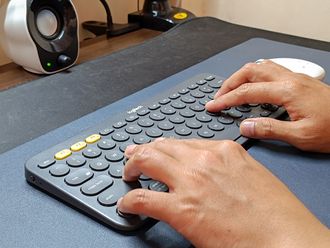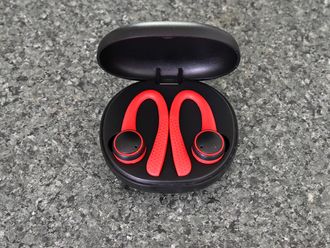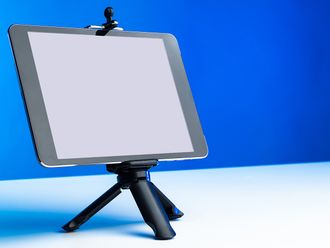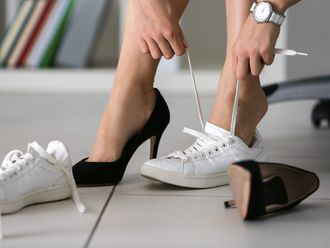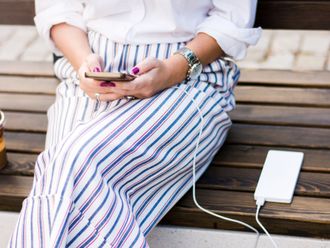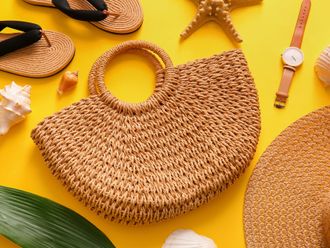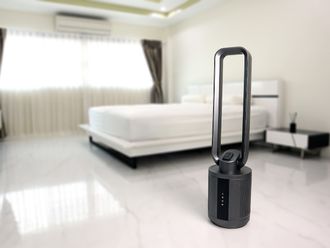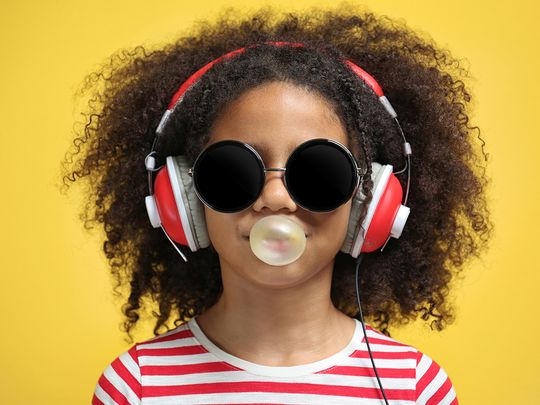
Open up a child’s backpack, and you’re likely to find a pair of headphones there.
In today’s digital age, their usefulness can’t be denied. While many children need headsets with clear sound quality for virtual interactions, others want to make sure they are able to plug into their devices, when mum and dad give them an opportunity to watch their favourite shows or movies.
But as more and more kids start listening through headphones from an early age, there is a growing concern about the risks of hearing damage. We spoke with Alexander Foley, head of the audio department at SAE Institute Dubai, who guided us on all the factors worth considering, when picking out the best headphones for children. He highlighted the importance of volume limiters, comfort and connectivity. Scroll down to read his advice.
Based on our expert’s recommendations and top-rated reviews on Amazon, we bring you a curated list of the best headphones out there for children, that are safe, affordable and full of fun designs. Get these delivered to you as early as tomorrow with Amazon Prime.
1. Best Overall: Puro Sound Labs BT2200s Plus
Pros
- Volume limiter
- Good battery life
- Soft and comfortable ear cushions
- Both wired and wireless
Cons
- Limited ambient sound reduction
A well-constructed pair of headphones, Puro Sound Labs’ BT2200s Plus is an excellent option for children who primarily use these devices to play games, watch movies and listen to music. Foley recommended it, saying: "These are bluetooth headphones but do have a wired input jack as well for when the batteries run out or you don't have a bluetooth device." The soft, vegan leather-wrapped headband and ear cushions are comfortable, and more importantly, this pair comes with a volume limiter that stops at 85 decibels – the maximum safe listening level recommended by organisations like the US-based Hearing Health Foundation and the World Health Foundation. It offers up to 20 hours of battery life for music playback, which extends to 200 hours if it’s on standby. Reviewers say sound quality is pleasant and clear, and Bluetooth 5.0 technology helps you pair it with a variety of devices wirelessly. You can also interchange the on-ear muffs to over-ear muffs for a better seal. Some reviewers complain, however, that there is limited ambient sound reduction.
Warranty: Amazon offers one-year extended warranty by Salama Care for Dh23, and two-year extended warranty for Dh33.
2. Best Design: JBL JR310BT Ultra Portable Kids Wireless Headphones
Pros
- Wide variety of colours
- Good, comfortable fit
- Foldable and compact
- Safe Sound technology
Cons
- No auto shut-off for Bluetooth
Available in a variety of colours to suit your child’s taste, JBL’s JR310BT headphones come in both wired and wireless forms. Foley bought this pair for his three-year-old daughter and is satisfied with it: “They are comfortable, fit her very well (and she's small for her age). They also resize easily and will fit her for the next five years.” The headphones are equipped with JBL’s Safe Sound technology, so the audio can’t exceed 85dB. Soft, padded headband and ear cushions, along with a compact and foldable design, make it both comfortable and portable. Reviewers appreciate that it comes with USB-C charging - just five minutes plugged in can get you two hours of battery life. There’s even a sticker set in the box so your child can give it a unique design. Some reviewers complain, however, that the Bluetooth connection should switch off automatically after a set time period, since children are unlikely to remember switching it off manually. This can drain the battery if you’re not aware it’s on.
Warranty: Amazon offers one-year extended warranty by Salama Care for Dh12, and two-year extended warranty for Dh17.
3. Best for Gaming: JLab JBuddies Play
Pros
- Useful retractable mic
- Good sound quality
- Volume limiter
- Well-placed mute button
Cons
- Fit may be an issue
If you’re looking for a pair of headphones with a mic, for kids who are gaming or learning remotely, JLab’s JBuddies Play is a solid contender. It comes with a retractable boom mic, which both reduces background noise and maximises voice clarity, without constantly irritating your child’s face. Even when retracted, the mic still works. JBuddies’ Play also has a volume limiter of up to 85 decibels, and a battery run of at least 22 hours, before it needs to be recharged. Reviewers love the large mute button that’s built right into the earcup – a much-needed shortcut when live streaming or attending a Zoom class. Gamers will appreciate the steady Bluetooth 5.0 connectivity and super-low 60ms latency on this device. Do note, however, that this pair best fits children between the ages of four and 11, and it doesn’t come with replaceable earcups, like the Puro.
Warranty: Amazon offers one-year extended warranty by Salama Care for Dh18, and two-year extended warranty for Dh25.
4. Best for Shared Devices: ONANOFF BuddyPhones
Pros
- Maximum volume of 85 decibels
- Range of colours available
- Comes with a travel bag
- Automatic registration to Amazon Buddy Club
Cons
- Wired
This award-winning pair of headphones has been engineered with materials that are hypoallergenic, durable and provide a custom fit for little ears. Capped at 85 decibels so they don’t damage hearing, the headphones are adjustable and can be folded and packed in a space-saving bag. With the Buddy Cable system, up to four headphones can plug into one device, thanks to a stackable audio jack, sold separately. And upon purchase of the headphones, kids can join Amazon Buddy Club to unlock loads of fun content for the whole family. Reviewers say it's a well-made pair of headphones that's durable and foldable. Some wish it had wireless capabilities, however.
Warranty: Amazon offers a one-year extended warranty for Dh12 and a two-year extended warranty for Dh19.
5. Best for Multiple Users: SIMOLIO Kids Headphone with Mic
Pros
- Three-level volume limiter
- Foldable and durable design
- Includes a sharing jack
- Range of colours available
- Comes with a carry pouch
Cons
- Wired
This pair of headphones has a three-level volume limiter (75, 85 and 94 decibels) so you can adapt it to children of different ages. The headband is made of stainless-steel memory strips that are extremely flexible, so you can stretch it to fit various head sizes. It also has in-line volume controls and a built-in mic for virtual classes. But best of all, a handy sharing jack allows your child to share audio with friends or family - it's compatible with all devices that have a 3.5 AUX port. It’s the ideal head set to pass between siblings at home. The headphones come in a convenient travel bag.
6. Best for Teens: Puro Sound Labs PuroQuiet Over-Ear ANC Headphones
Pros
- Active noise cancellation
- Comfortable and durable
- Volume limiter
- Long battery life
- Comes with a travel case
Cons
- Mic picks up background noise
Another excellent option from Puro Sound Labs, the PuroQuiet offers excellent audio quality, intuitive controls, a comfortable and durable build, and the ability to connect several pairs so that multiple kids can listen to the same device. But the main reason to buy this pair of headphones is its addition of active noise cancellation (ANC), something teens on the bus or Metro would appreciate. Reviewers say it’s effective, although not as powerful as some of the best adult ANC headphones. Still, the noise reduction is noticeable on flights, so it’s also a good pair to take when travelling. The device can be used in both Bluetooth and wired modes, and it also has a useful auto shut-off feature to save battery life. But some reviewers say the mic on this pair of headphones is not the best quality – it picks up background noise and movement.
Warranty: Amazon offers one-year extended warranty by Salama Care for Dh29, and two-year extended warranty for Dh41.
How different is the audio experience for children, when compared to adults?
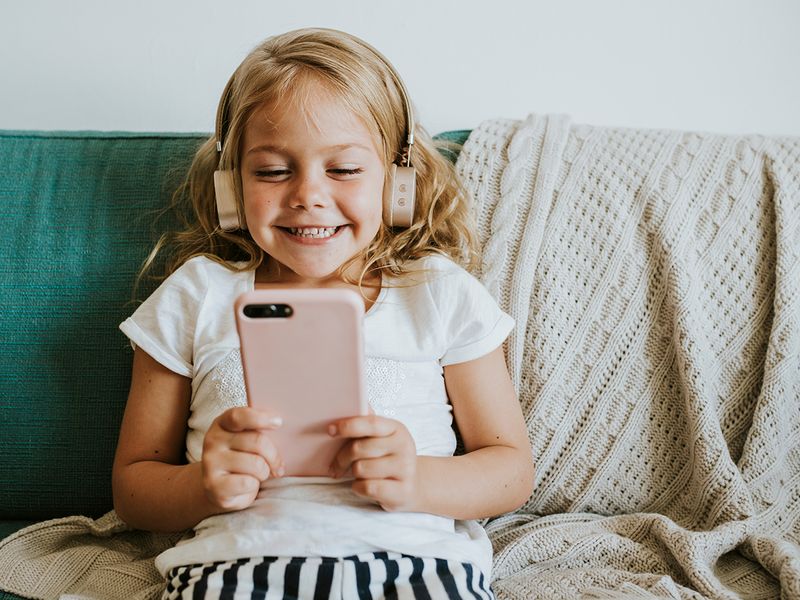
The short answer, is not much. According to Foley, “sound is sound whether it comes to the ear from a speaker, voice or headphone. So, listening to the world around us or listening via headphones isn't any different, physiologically speaking. The only big difference is that headphones help to isolate the outside world, making the content you are listening to clearer.”
The human hearing range is between 20Hz and 20,000Hz. However, we cannot hear all the frequencies in this range. Foley explained: “We start to lose the ability to hear the lowest and highest of these frequencies relatively early on in our lives. A young adult will typically have no issues hearing between 30Hz and 17KHz while anyone younger could still hear higher up in the range. This is due to a number of reasons but the physiology of the ear itself is the main factor.”
It's why some shrill sounds can cause your child to quickly cover up their ears, even though you may not be able to hear it as well or as clearly. Foley added: “It is also important to understand that the human ear does not respond to all of these frequencies evenly. In broad terms, our ears are poor in low and high frequencies, good in the mid-range, and particularly sensitive to frequencies around 4KHz. Children may have more of an equal response through their extended range and the frequencies they may find most sensitive may be higher due to a shorter ear canal than an adult.”
Limiting volume is essential for ear health
When it comes to volume, however, there’s a clear line that is best not crossed, for the safety of children’s hearing.
Foley explained that the World Health Organisation recently identified a level of 75dB sound pressure level (SPL) as being a suitable listening level for children. “This is a very safe listening level and exposure time could be as much as 24 hours,” he said.
Other health organisations like the US-based National Institute for Occupational Safety and Health (NIOSH) recommend a volume level of 85dB as a good benchmark, since it is safe to listen to audio at this level for up to eight hours continuously.
Even for adults, a limit on volume is essential to maintain healthy hearing. Foley said: “Hearing loss isn't just caused by being exposed to one loud sound on one occasion. Our ears are like a machine: the more intensively they are used, the more they wear out. Going to a 100dB rock concert for two hours is usually pretty taxing on your ears, but your weekly commute with your headphones on at a high level could be doing much more damage.”
So, once you cross eight hours, at a listening level of 85dB, it’s time to take a break. Foley said: “This is your maximum exposure for the day, meaning after you have reached this amount of time, you should try and get somewhere quiet for a while to let your ears recover.”
Volume limiters on headphones are an excellent way to take control of audio levels, and it’s something our expert highly recommends for both children and adults.
Factors to consider when buying children’s headphones
Apart from volume control, comfort is another aspect worth considering, since headphones with a bad fit can be irritating, and even end up leading to bad posture for your child.
Between in-ear and on-ear headphones, the latter is the natural choice for children, says our expert. Foley added: “Children's ear canals are very small and in order for earbuds to work effectively, they need to be sealed, and finding the right fit can be difficult. I was recently on a flight with my three-year-old daughter and they only had earbuds; they were constantly falling out and were too big for her ears. They didn't work at all.”
Since earbuds are sealed, their sound isolation works better than headphones – so it’s likely you won’t be able to listen to what your child is hearing, even when they’re sitting next to you. But earbuds work closer to the eardrum, which can be a concern. Foley said: “[They] could cause an increase in sound exposure if not monitored. If you can't hear the sound coming from your child’s earbuds, it does not mean that they are listening to them at an appropriate level. They could still be far too loud. Over-ear headphones are easily more comfortable, fit much better, and it is much easier to tell when your child has turned the volume up too much as you'll be able to hear the sound escaping from them much easier. They also come in a variety of interesting and fun styles and are not lost as easily.”
As a parent, Foley has also found headphones with Bluetooth connectivity to be advantageous. He said: “There are no wires that can get tangled or that intrude on a screen if the child is watching something. However, if you can get ones that include a cable, then those are very useful for flying. If the child wants to watch something via in-flight entertainment, then having something they can just plug into the screen is very useful.”
Our recommendations are independently chosen by Gulf News editors. If you decide to shop through links on our website, we may earn an affiliate commission, as we are part of Amazon Services LLC Associates Program.


